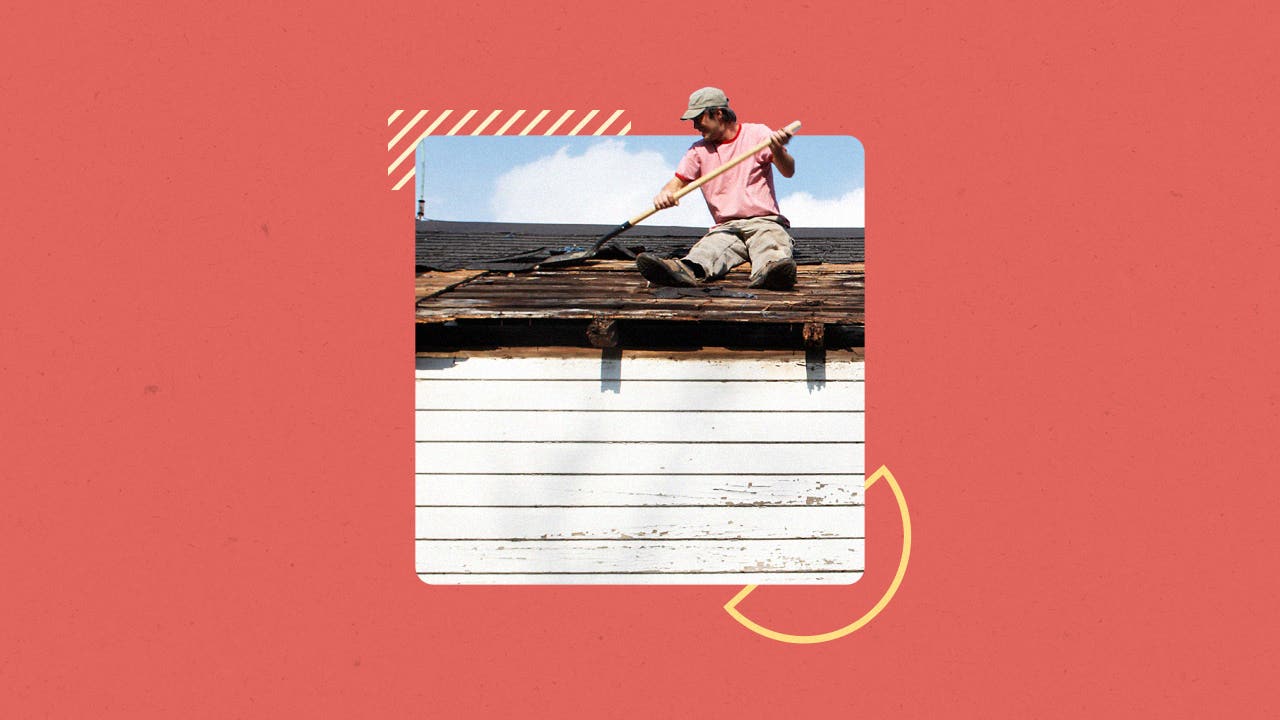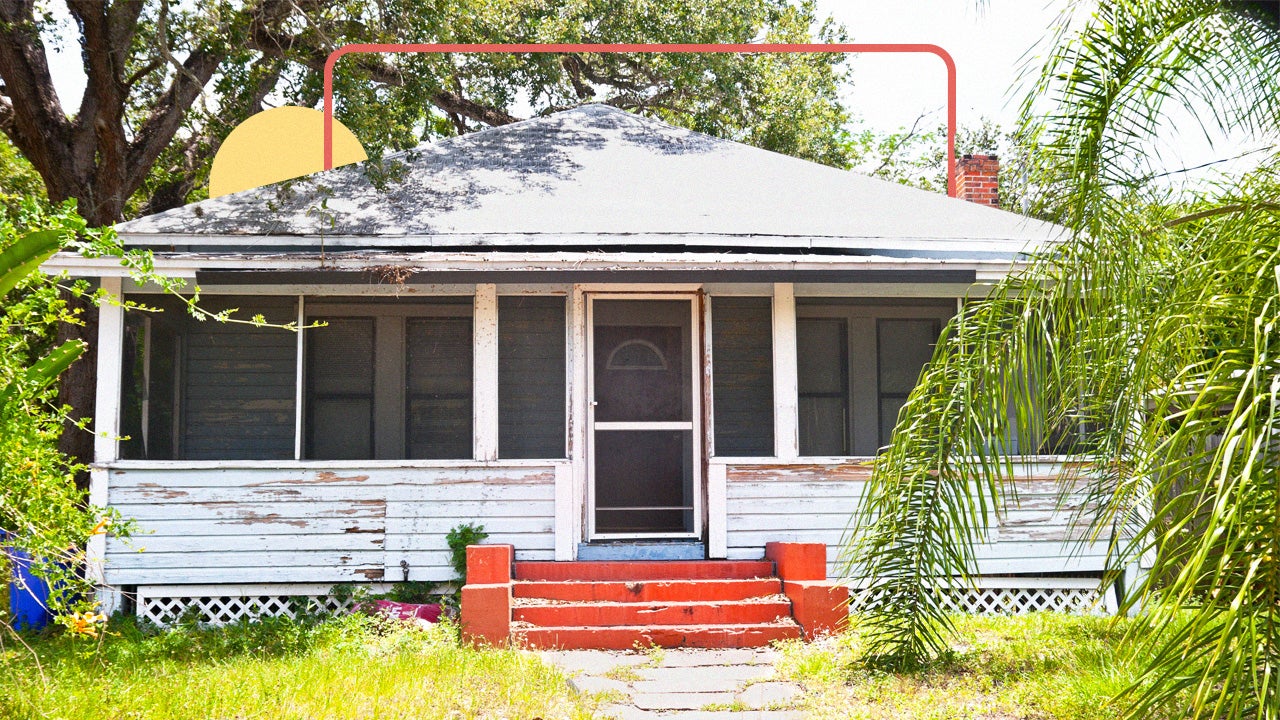How your home can pay for emergency repairs

Key takeaways
- If you have a significant amount of equity built up in your home and are facing a five-figure emergency repair, tapping that equity could help finance the fix.
- Benefits of using home equity loans and lines of credit (HELOCs) include lower interest rates, longer repayment terms and possible tax deductions.
- Downsides of home equity financing include putting your home up as collateral, diluting your ownership stake and taking on a debt that could impact any home sale profits.
Emergency repairs are a fact of homeowner life. Maintaining an emergency savings account is a good way to handle the unexpected, and of course there’s homeowners insurance too. But if you don’t have any savings set aside, or if your coverage is falling short, what then? It might make sense to use your home to fix your home, by borrowing against your home equity to cover the repair bills.
Both home equity loans and lines of credit (HELOCs) allow you to tap your home’s equity (the amount of the property you own outright). With each, you’re putting the property up as collateral for the debt.
Is it worth it? Let’s look at the particulars of using home equity to finance emergency home repairs.
Should I use my home equity to finance my repairs?
If you have a significant amount of equity built up in your home and are facing a serious, five-figure emergency repair, tapping that equity could help finance the fix — especially if it evolves into a major remodel.
“After a short and mild downturn, remodeling market spending is expected to grow again this year supported in part by massive levels of home equity that boost homeowner confidence and encourage greater investment,” says Abbe Will, associate director of the Remodeling Futures Program at Harvard University’s Joint Center for Housing Studies
$303,000
Source: CoreLogic
Diluting your homeownership stake — turning something you own into something you owe — isn’t something to be done lightly. But, among current homeowners, 55 percent see home improvements or repairs as a good reason to tap home equity, a Bankrate survey found.
Tapping into their home's equity may help alleviate some of the financial stress homeowners face during catastrophic losses.— Shannon Martin, Bankrate Insurance Writer
How to determine your home equity
The ability to tap into your home equity to cover the cost of emergency repairs will depend largely on just how much equity you have available. Equity is the difference between your home’s current fair market value and the remaining amount you owe on the mortgage, or and any other loans you may have against the home.
For instance, if your home is worth $500,000 and the balance on your mortgage is $350,000, that means you have $150,000 in home equity. However, the amount you actually will be able to borrow won’t be all of that. Most lenders will require you to keep a certain amount of your equity, usually 15-20 percent of it, untapped.
How to tap home equity
The two primary types of tools that homeowners can use to finance emergency repairs are home equity loans and HELOCs.
A home equity loan is a lump sum of money that is repaid in monthly installments, typically with a fixed interest rate. A home equity line of credit functions like a credit card, with a fluctuating interest rate. It is a revolving line of credit that you borrow against as needed; you can repay those withdrawals and then borrow money once again during a set draw period.
Pros of using home equity to finance emergency repairs
- Lower interest: Secured loans typically have lower interest rates and better terms than unsecured ones. That means you’ll pay far less interest on the home equity loan than you would on a credit card.
- Long repayment timelines: Some home equity loans come with repayment terms as long as 20 years — much longer than most personal loans — which can make the monthly payments more affordable.
- Tax advantage: The interest on a home equity loan is often tax-deductible, if the money’s used to repair, rebuild or substantially improve the home.
Cons of using a home equity loan to finance an emergency repair
- Potential to lose your home: Your home is the collateral backing the debt. Meaning if you fail to repay, the lender could foreclose on it. Also, if the debt’s still outstanding when you sell the home, you’ll have to immediately repay it out of your proceeds.
- Decreased equity: Borrowing against your home equity means you’re decreasing your ownership stake — a potential problem should you want to refinance your mortgage down the road. Also, if there’s a drop in your local housing market, you could end up pouring money into your home only for its value to sharply decline. You could even end up with negative equity, meaning you owe more on the home than it’s currently worth.
- Funding timeline: A home equity loan may not be the quickest way to access cash in an emergency as the entire process, from application through funding, can take the better part of a month or even more. HELOCs tend to be a little quicker, closing in as little as two weeks.
Annual home emergency spending
Emergency home repairs are growing in frequency, particularly as extreme weather-induced damage becomes more common: 83 percent of homeowners dealt with unexpected repairs in 2024, up sharply from 36 percent in 2023, according to insurer Hippo’s latest “Housepower Report” survey.
The most common issues reported include water damage, with 41 percent non-flood-related and 21 percent flood-related; roof damage, at 37 percent; and window and door issues, at 34 percent. With inflation driving up the cost of labor and materials, “these repairs come at a steep cost, with 46 percent of homeowners spending more than $5,000 out-of-pocket,” says Courtney Klosterman, home insights expert at Hippo.
According to Angi’s “2024 State of Home Spending” report, 43 percent of homeowners reported increased stress related to home repairs, with younger homeowners feeling it most acutely. Emergency expenditures do vary by homeowner age. Younger generations allocated more to emergency projects, the report found. In terms of annual outlay last year:
- Gen Z (13-28 years old) spent $1,387
- Millennials (29-44 years old) spent $1,329
- Gex X (45-60 years old) spent $691
- Baby boomers (61-79 years old) spent $680
- Silent generation (80-100 years old) spent $94
While some of these figures seem small, the line between emergency home spending and home improvement spending does get blurry. The threat of a problem – “you’re just one big storm away from…” — can often motivate homeowners to carry out big renovations or upgrades. One Bankrate contributor did just that to stave off a potential calamity, using her home equity stake.
The most common emergency home repair costs
Emergency repair costs vary tremendously, depending on the size of your home, the area where you live, the nature of the emergency and of course, the extent of the damage. However, some repairs do tend to be more expensive than others, across all regions and homes. Here’s a breakdown of some of the most common emergency home repairs and how much they typically cost, based on the latest data from HomeAdvisor.
|
Repair |
Cost range | Average cost |
|---|---|---|
| HVAC | $130 – $2000 | $350 |
| Roof | $392 – $1,923 | $1,147 |
| Rewiring | $602 – $2,593 | $1,564 |
| Driveway (asphalt) | $1,071 – $4,011 | $2,459 |
| Septic system | $629 – $3,038 | $1,830 |
| Mold remediation/removal | $1,223 – $3,751 | $2,365 |
| Foundation | $2,218 – $8,110 | $5,163 |
2025 emergency savings statistics
- 59% of Americans are uncomfortable with their current level of emergency savings, according to Bankrate’s Annual Emergency Savings Report. One-third (33%) of U.S. adults have more credit card debt than emergency savings.
- 13% of U.S. adults said they had no emergency savings a year ago or in 2025, according to the Bankrate report.
- Only 41% of U.S. adults would use their savings to pay for an unexpected emergency expense of $1,000 or more, the report found.
- 26% of current homeowners say they are unprepared for the potential cost associated with extreme weather events (like hurricanes, tornados, wildfires, winter storms and floods) in their area, according to Bankrate’s Extreme Weather Survey. Furthermore, 43% have not done anything within the last five years to protect against property damage due to weather events, the survey found.
- According to Bankrate’s 2024 Money and Mental Health Survey, 56% of people who say money negatively impacts their mental health cite not having enough emergency savings as a reason why.
Other home repair financing options
If you’re needing to pay for an emergency home repair and don’t want to take out a home equity loan or HELOC, consider the following options:
- Homeowners insurance claim: A homeowners insurance claim should be your first line of defense against damage and destruction. But, before filing a claim with your insurer, look at your policy to see if the damage is covered, understand your deductible and consider how many claims you have filed in the past. Also bear in mind that the timeframe for getting reimbursed can range from 30 to 90 days.
- Personal loan: If you don’t have strong credit or a lot of equity in your home, a personal home improvement loan might be a more accessible option. Personal loans tend to be quicker and easier to get than home equity loans, but the interest rates are relatively higher, especially if you have poor credit.
- Government-backed mortgages: Some government-backed loans, such as an FHA 203(k) loan, a VA renovation loan or a USDA Section 504 home repair loan, can help with both minor repairs or major rehabilitation projects. If you’re in an emergency situation and your home isn’t habitable, you might not have the luxury of time to obtain one of these loans, but they can be a viable option if the fix isn’t urgent and you qualify.
Final word on using your home to finance emergency repairs
The cost of unexpected home repairs can add up quickly. Building up your emergency savings fund, keeping your credit in good shape and ensuring you’re adequately insured can help you access money when you need it most, says Bankrate insurance writer and licensed insurance agent Shannon Martin. Still, she notes, “some out-of-pocket expenses are unavoidable. Tapping into home equity may help alleviate some of the financial stress homeowners face during catastrophic losses.”
Home equity loans and HELOCs typically come with competitive interest rates and a lengthy repayment timeline: They may well be the most affordable option for borrowing a sizable sum. But consider the downsides carefully. This type of financing uses your house as collateral, will take a while to obtain and will decrease the equity you’ve built in your home. It’ll also act as a lien on the property, which will have to be repaid at once if you sell, eating into any profits you might make.
FAQ
You may also like

Best high-risk homeowners insurance companies

Should you tap your home equity to invest?




